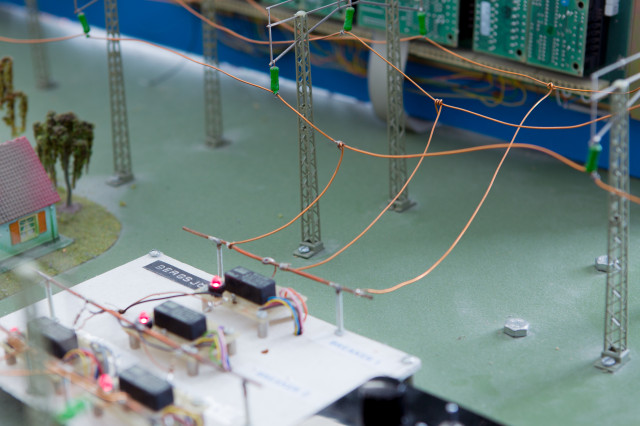This is a project course worth 7.5 ECTS credits, which is equivalent to 200 work hours of full-time study. As the course runs about 8 weeks, this implies that about 25 hours a week must be devoted to the various course activities, including introductory lectures and reading of course material, together comprising about 20% of the course activities, and carrying out the project work, which comprises 80% of the course work.
The introductory lectures on fundamentals of radar, antennas, modular radar design and SAR imaging will be taught by the course responsible. The course includes a guest lecture by the head of the Radar Systems Department of FOI (Swedish Defence Research Agency). Attendance of the introductory lectures is compulsory. The learning progress during the lecture part is monitored by online quizzes. During the project work, weekly progress review meetings are carried out with the assigned teacher.
The project work is supervised by senior researchers, assisted by PhD students and the course responsible.
The course completes with the final project report writing and the final presentation to a critical audience.
The objective of this course is to provide an introduction to radar systems, both hardware and software, and radar signal processing by building and testing a radar system capable of measuring range, radial velocity and forming synthetic aperture radar (SAR) images. During the course, the student will implement a radar front end using of the shelf components along with the implementation using a fully functional state-of-the-art software-defined radio system. Furthermore, the course develops the student’s ability toapply radio frequency (RF) circuits, antennas, analog circuits, signal processing and basic electromagnetics. Upon successfully completing the course, the student will be able to:
- understand and design the block diagram of radar front-ends for different real-world applications.
- use radars to measure range with time of flight and radial velocity with Doppler shift.
- understand the functioning of synthetic aperture radar (SAR) and the use of the radar to take SAR images.
- perform signal processing of received radar signals to extract the required information.
- understand the functioning of the basic RF components in a radar front end, including low noise amplifier (LNA), mixer, power amplifier (PA), power divider/combiner, oscillator, attenuator, modulator, isolator/circulator and antenna.
- understand the terms used in RF circuit, antenna and waveguide designs.
- implement the radar front-end using a state-of-the-art software defined radio (SDR) system.
- use GNU Radio and Matlab for simulation and real-time SDR radar or communication system.
- characterize RF components using state-of-the-art measurement equipment, including a Vector Network Analyzer.
- write a project report.
- present and defend the results to a critical audience.
- work in a small team, including taking management responsibility from project plan writing to work distribution and task assignment to the team members.
- optional: design and implement 3-D printed antennas for radar applications.
